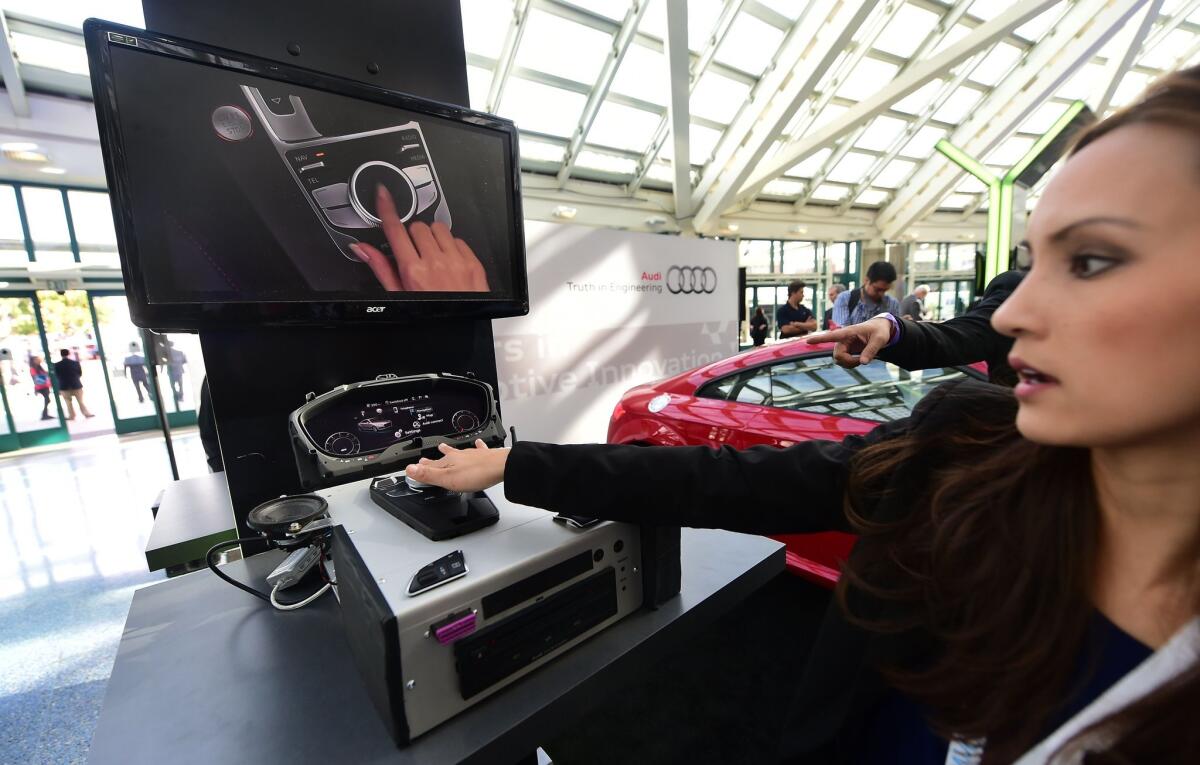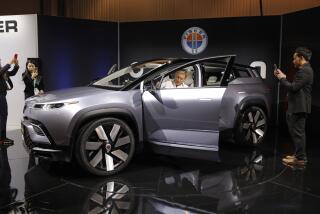L.A. Auto Show: How does a car become ‘connected’?

- Share via
Automotive technology executives Kevin Link and Steve Millstein are fascinated with Nest, the thermostat and smoke detector maker that Google Inc. purchased for $3.2 billion this year.
Nest devices connect to the Internet, taking data about energy usage into online storage. Utility providers buy aggregate data that allows them to project energy demand and save on production costs, and Google might have other data-analysis ideas percolating.
In separate interviews this week at the Los Angeles Auto Show’s Connected Car Expo, Link and Millstein brought up the staggering price paid for Nest as a sign of how much value automakers could derive if they kept each car constantly connected to the Internet.
They said car companies could identify defects more quickly, increase sales at dealerships by presenting personalized service offers or, for the first time, recognize when a car has changed hands without a dealer’s involvement.
“Car companies don’t know anything about you,” said Millstein, a managing director at wireless service provider Aeris. “The data is the holy grail.”
But how to enable the online link is the question that divides automakers.
Some cars have their own cellular radios that power services such as General Motor’s OnStar. Carmakers have traditionally charged a subscription fee to access the extra features through the cellular network. Ford’s deal is $60 a year, for example.
But only about a fifth of consumers are willing to pony up for that subscription, according to McKinsey & Co. survey released in September.
Other manufacturers rely on a driver’s smartphone to provide the Internet connection.
But Link, of Verizon Telematics, and Millstein want to see carmakers explore different business models. Most preferable would be a hybrid in which smartphones provide the connection for data-intensive entertainment and navigation services while an embedded cellular chip transmits driving and car-health data.
In the long run, carmakers would probably save money if they provided the cellular service for free, Millstein said. It would cost them $60 over eight years, he said.
The auto industry seems to be taking notice.
“What we are seeing is that the customers would prefer to get the services included in the price of the car, while a recurrent subscription has a lower appeal,” Fiat Chrysler Group’s Massimo Cavazzini said in a report put out by Spanish telecommunications provider Telefonica in July.
In the same report, a Renault executive said there’s also growing consumer demand for a pay-as-you-go service that, for instance, a family might turn on only while on vacation.
Link said offering free cellular service for online safety and security features would be the best investment an automaker could make in terms of customer relationship management. He cited the case of a manufacturer who had data on about 6% of customers but increased that to 90% after offering free service in one market.
Chat with me on Twitter @peard33
More to Read
Inside the business of entertainment
The Wide Shot brings you news, analysis and insights on everything from streaming wars to production — and what it all means for the future.
You may occasionally receive promotional content from the Los Angeles Times.











